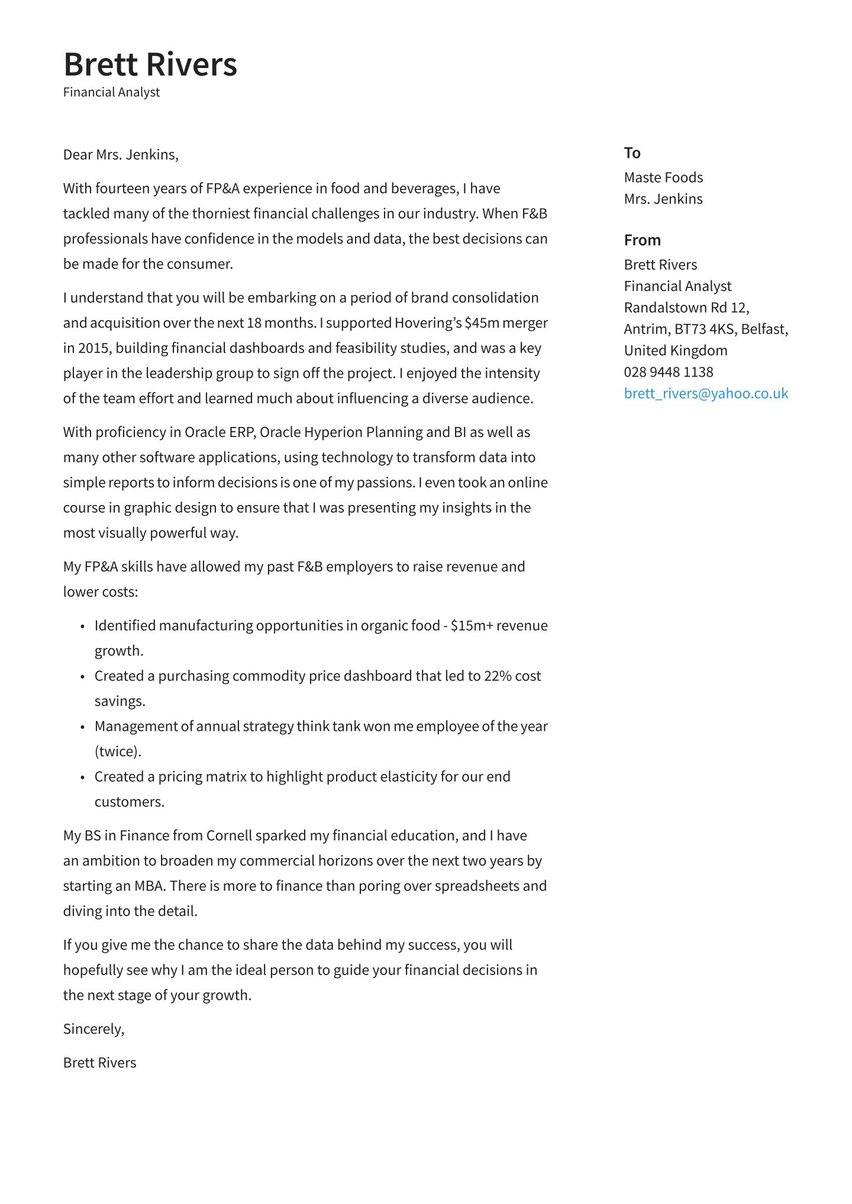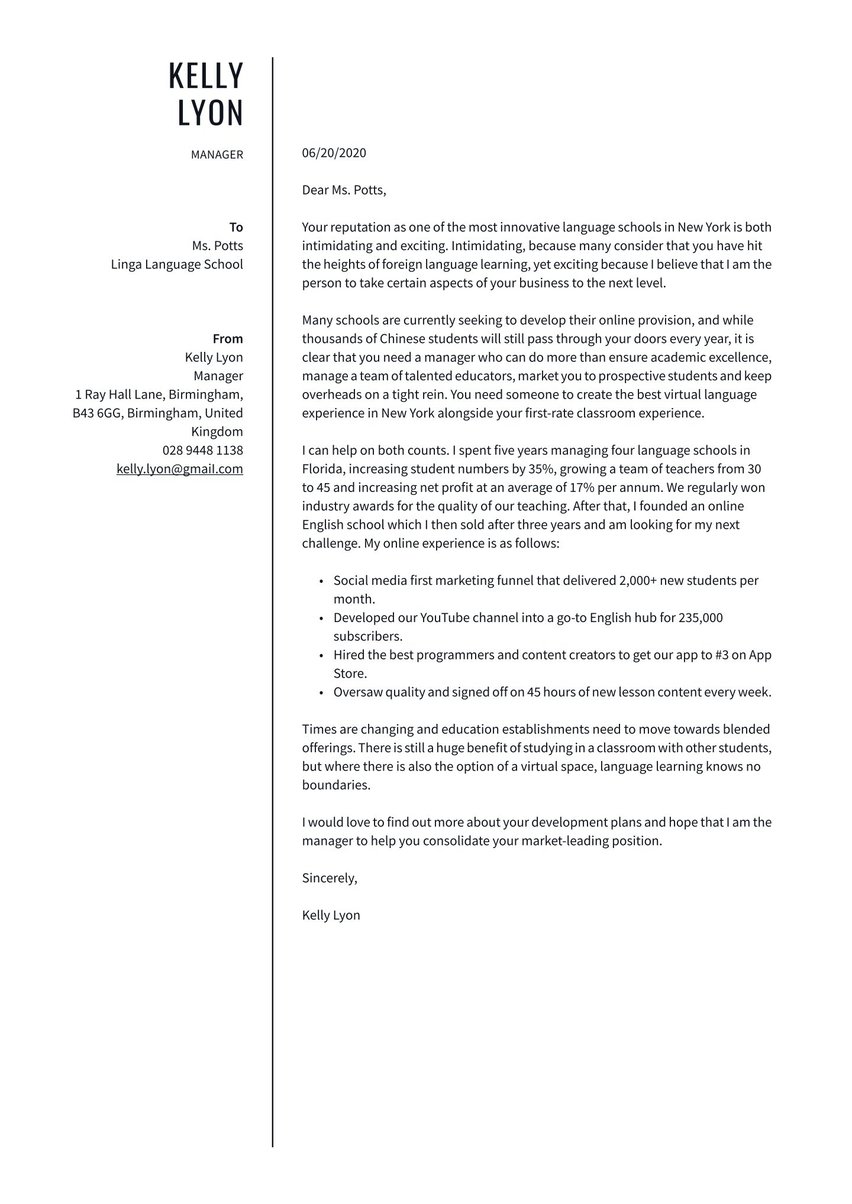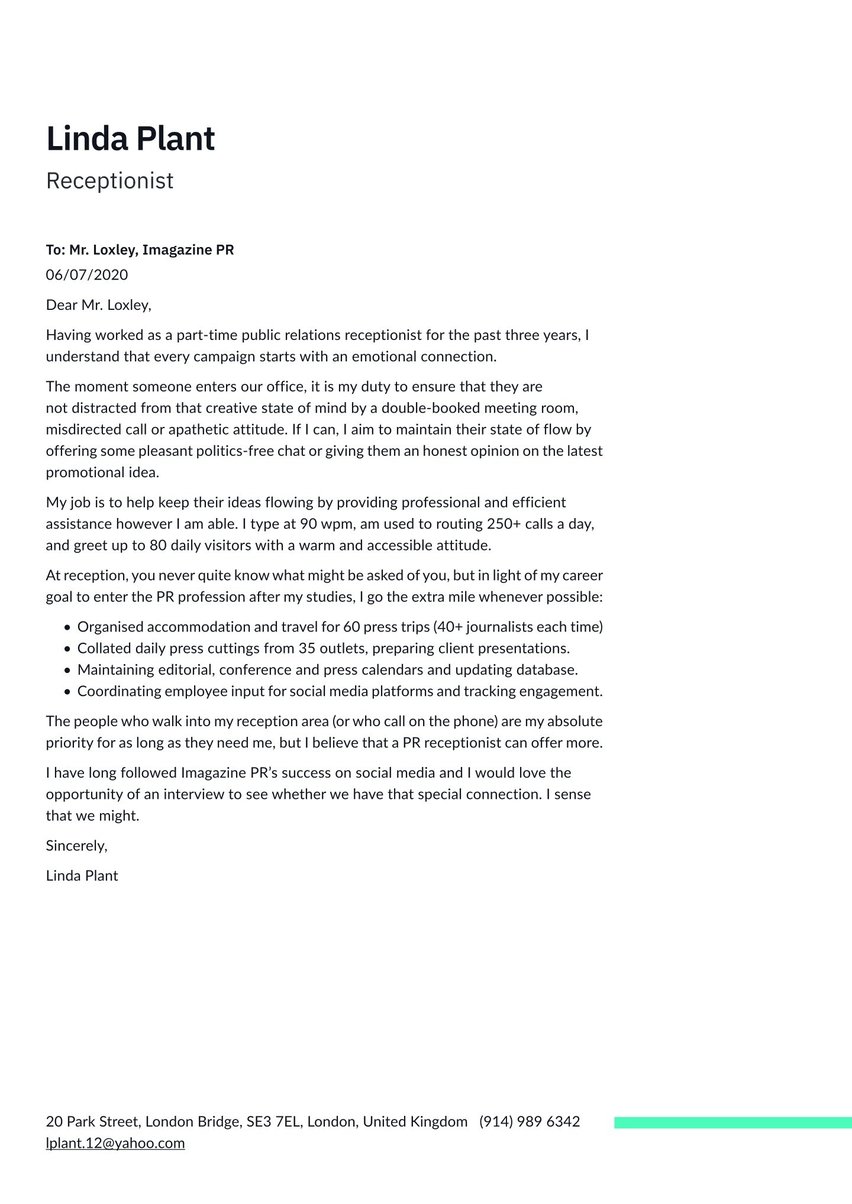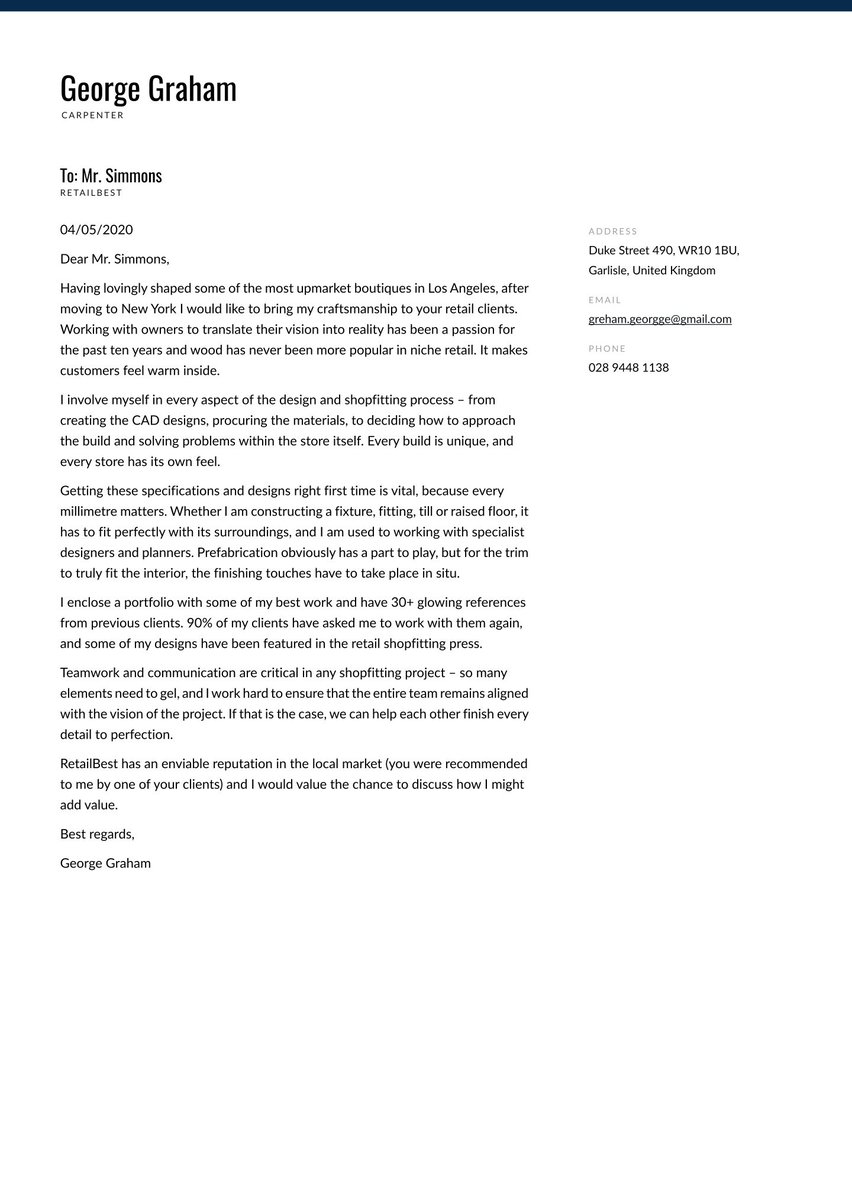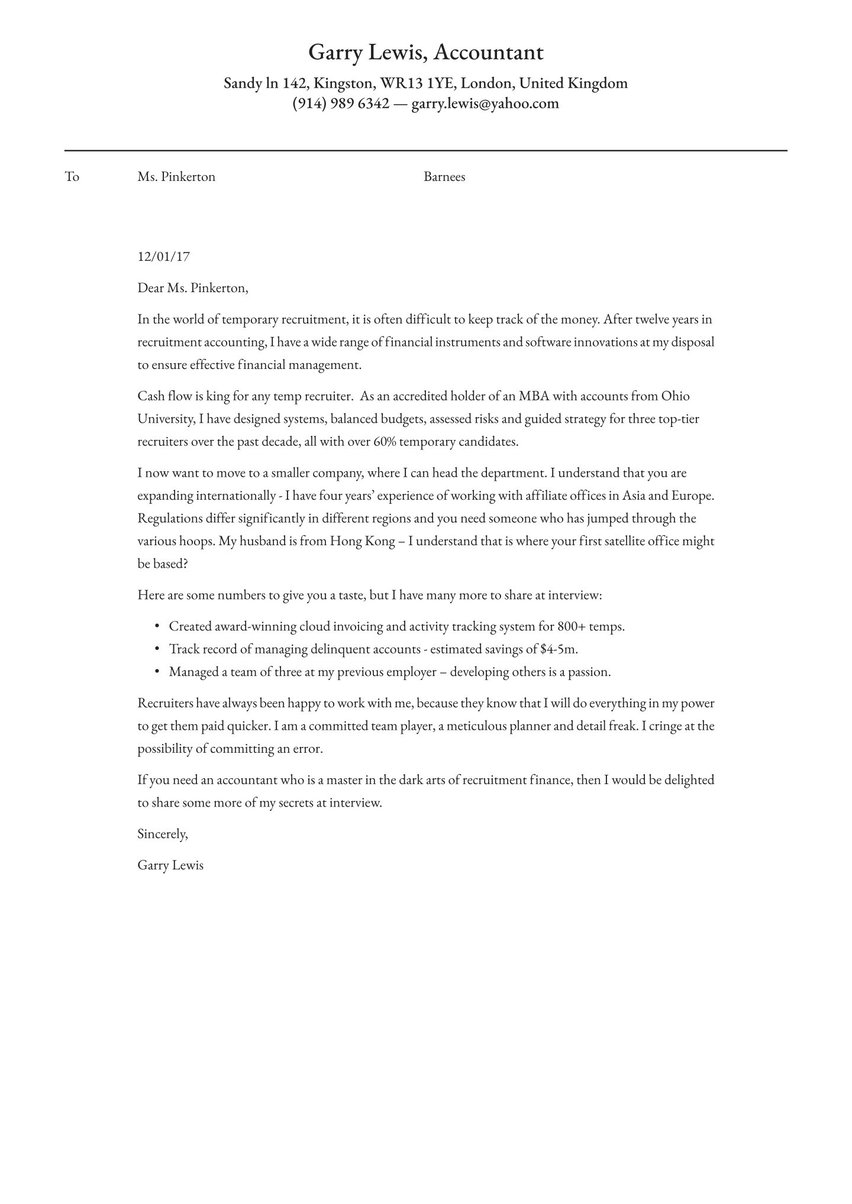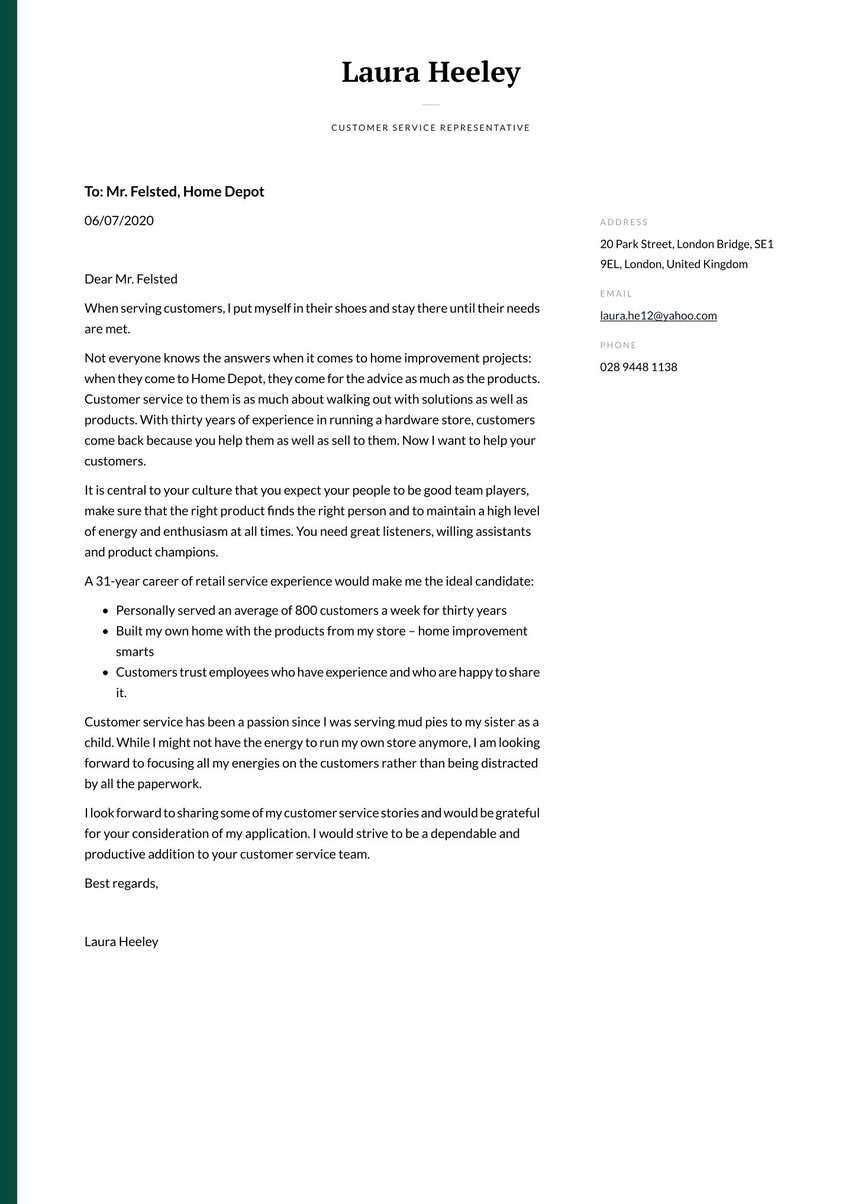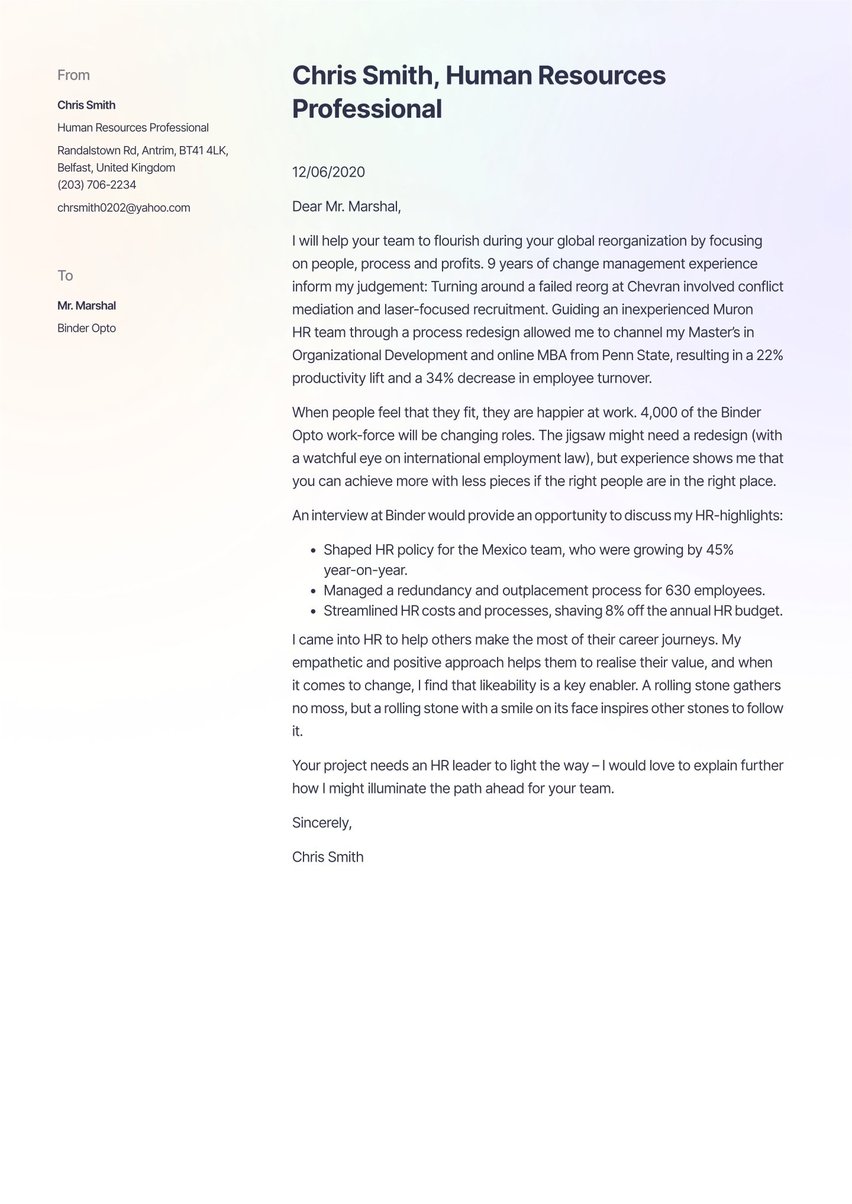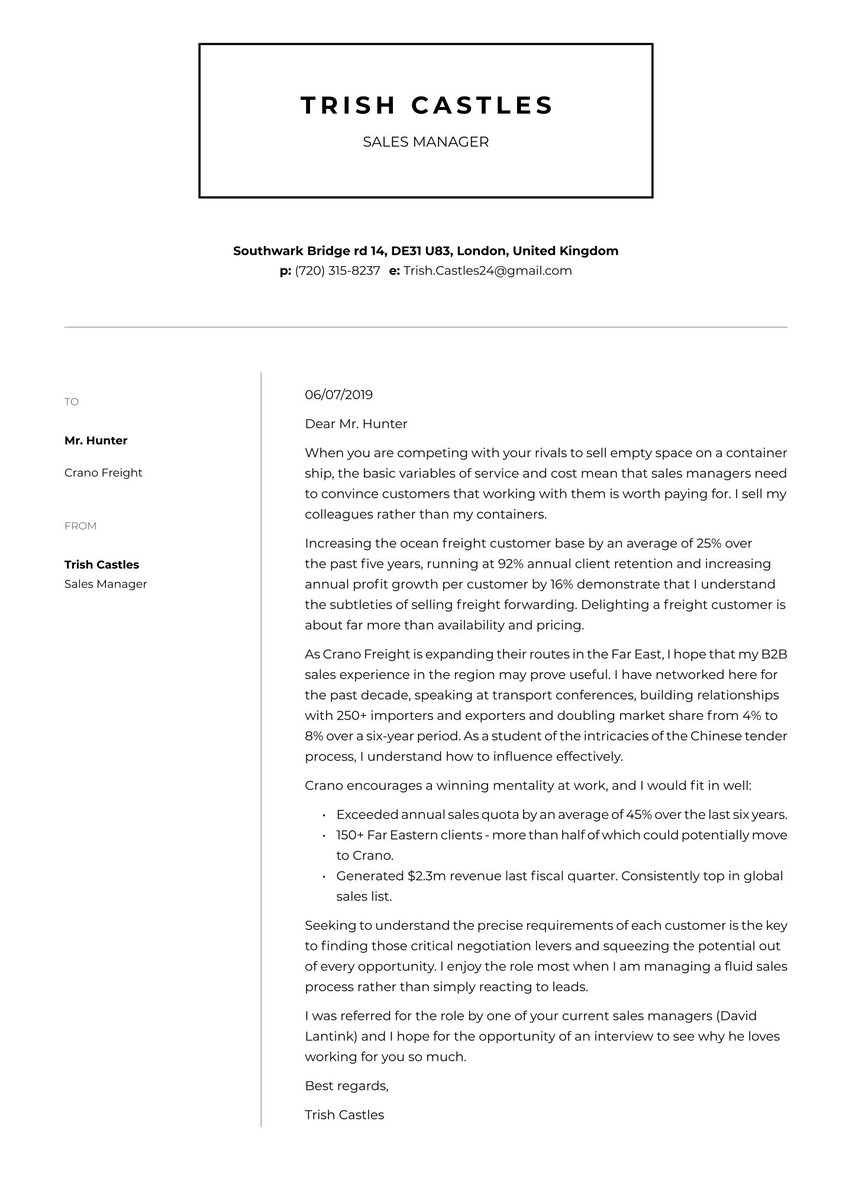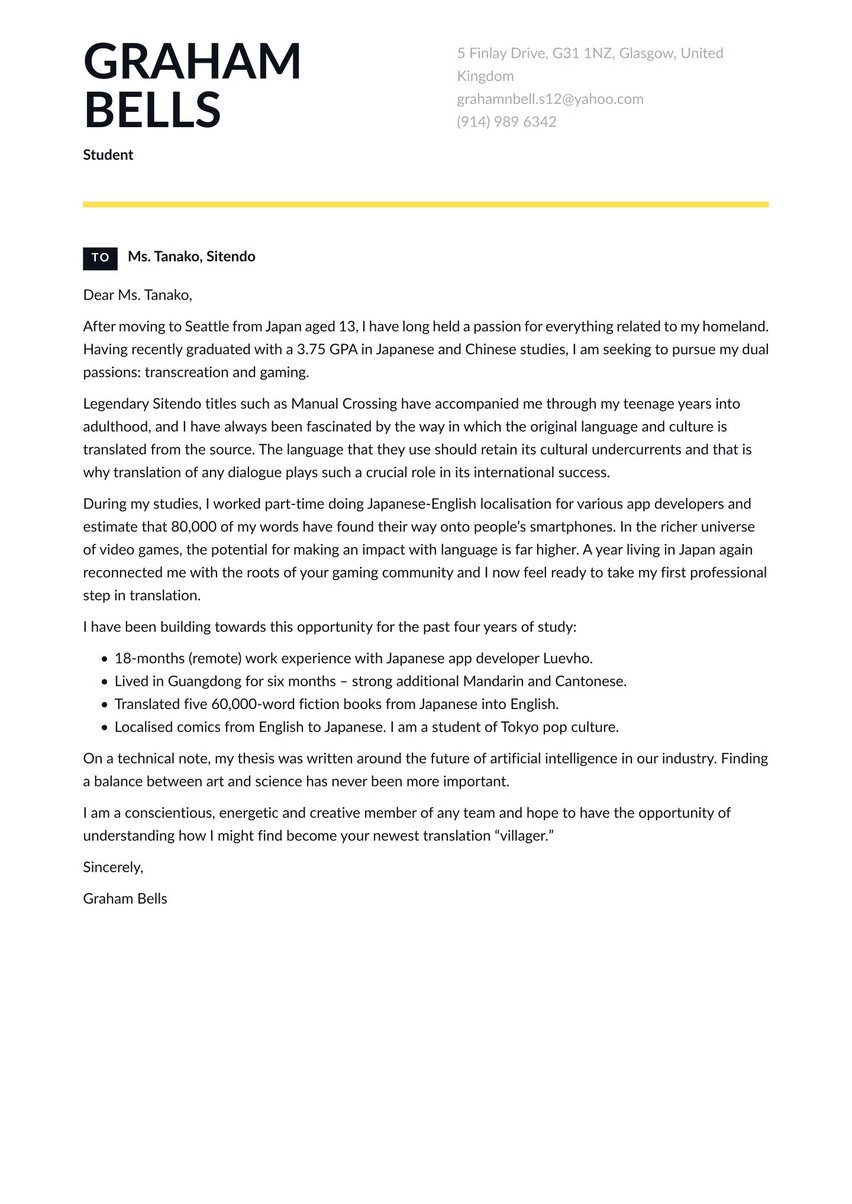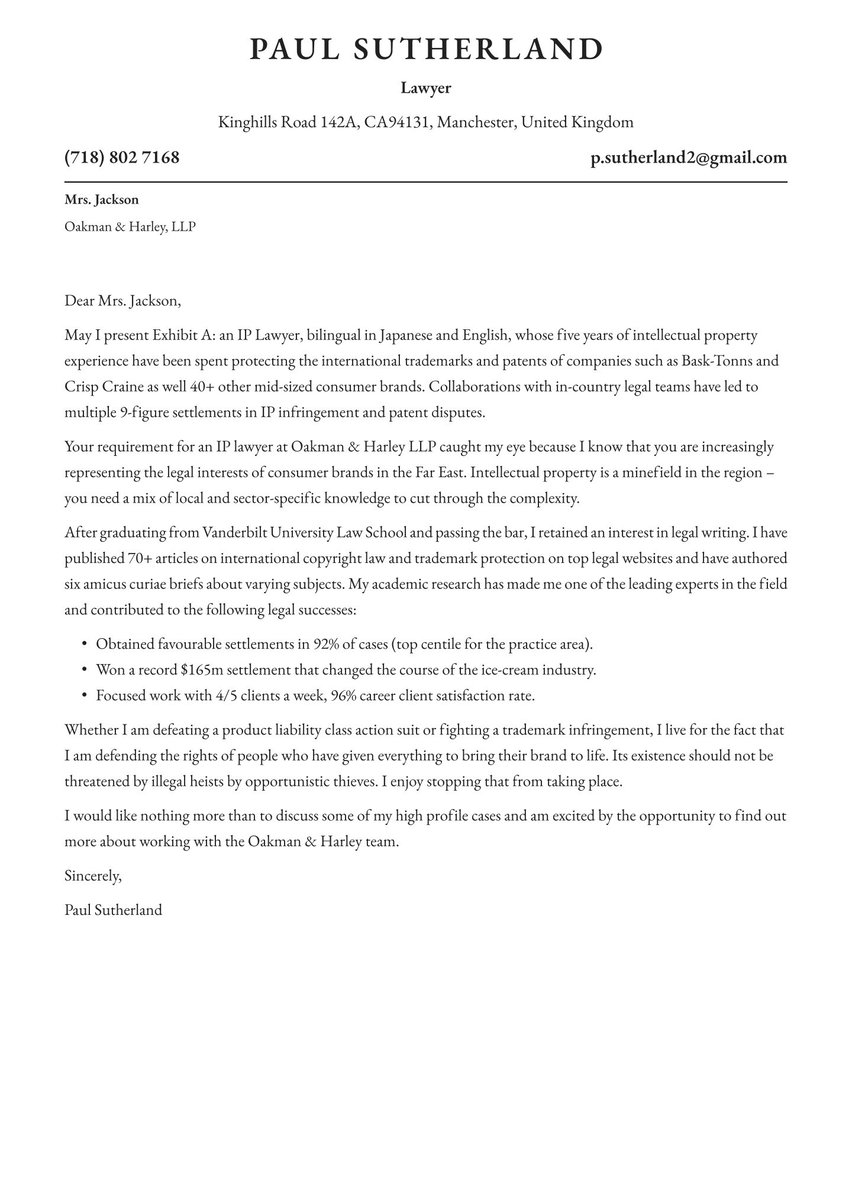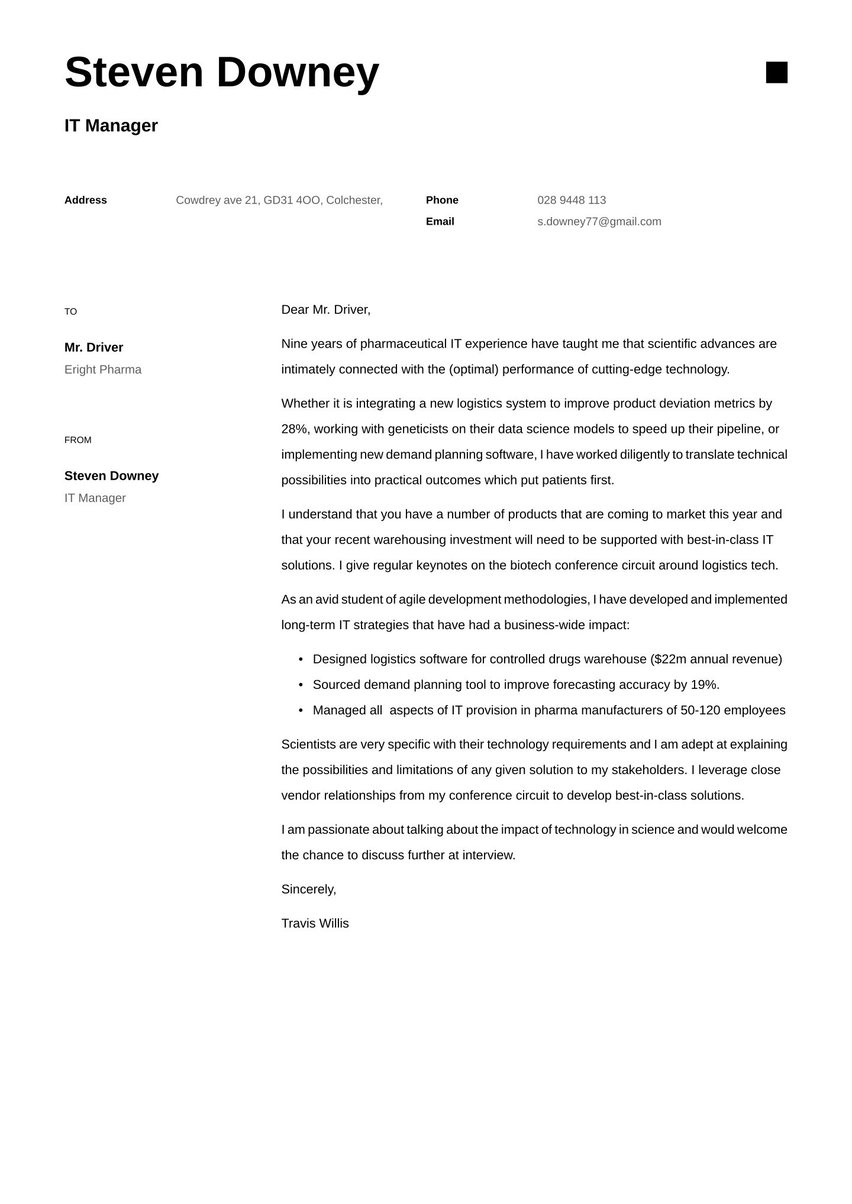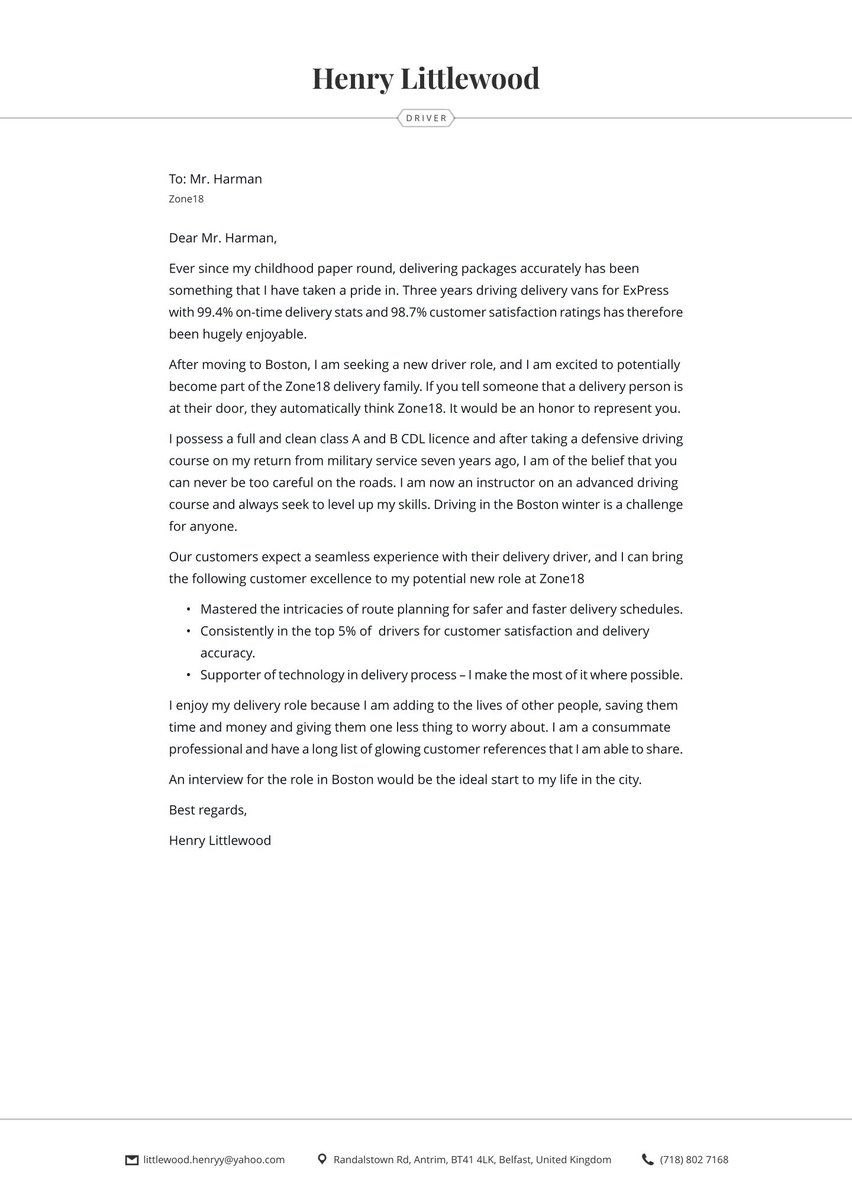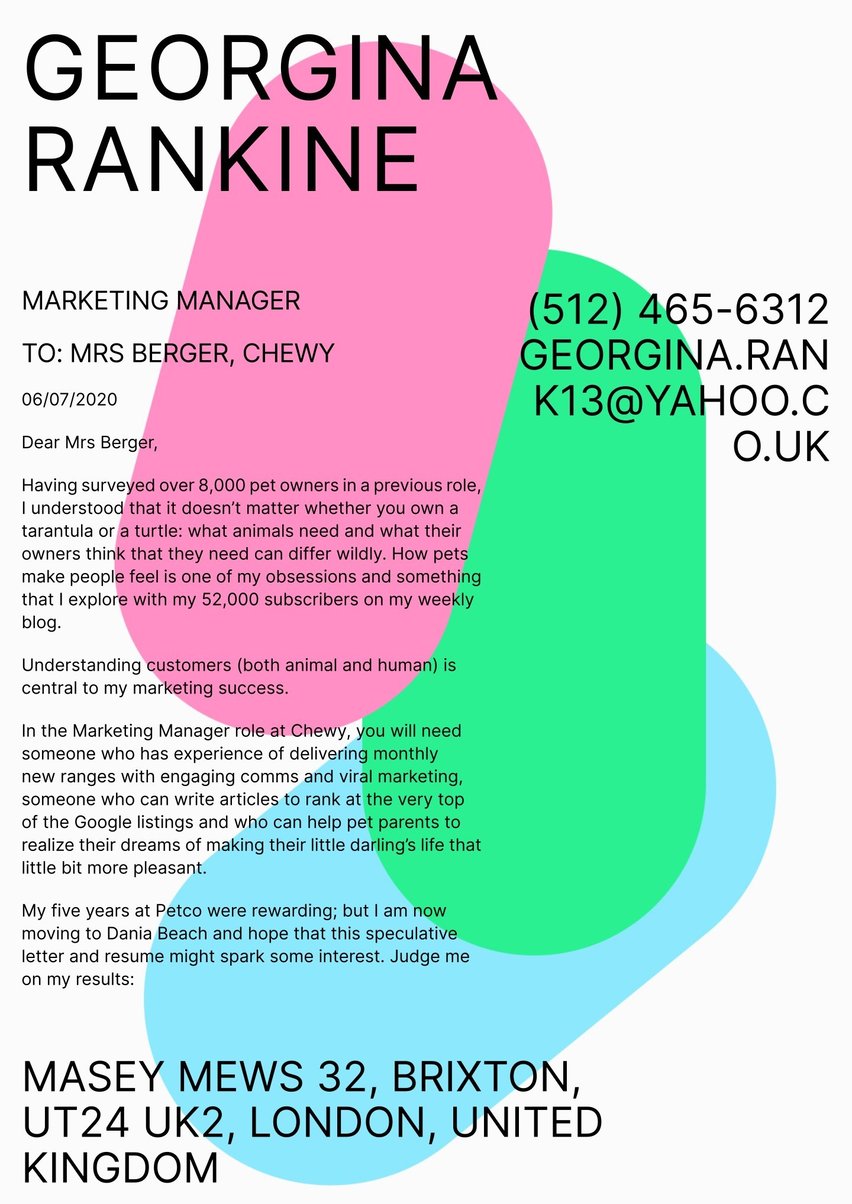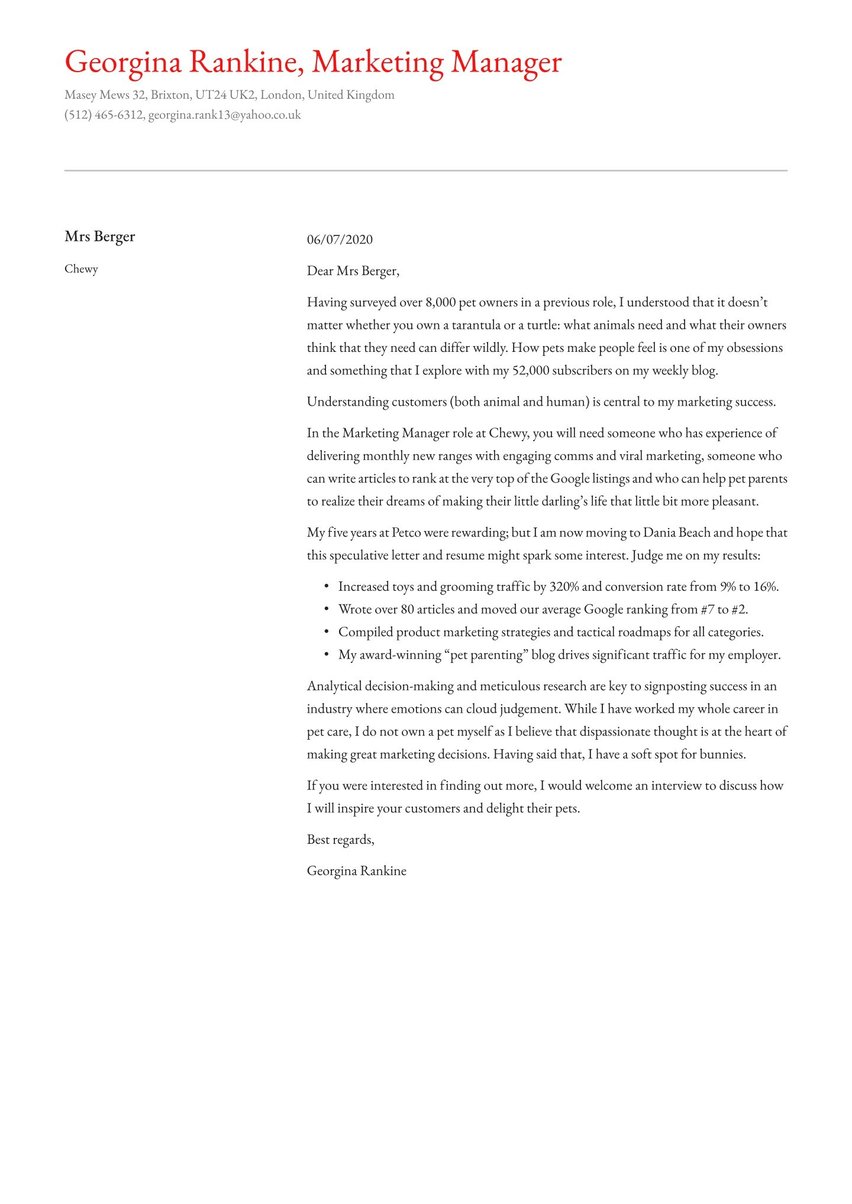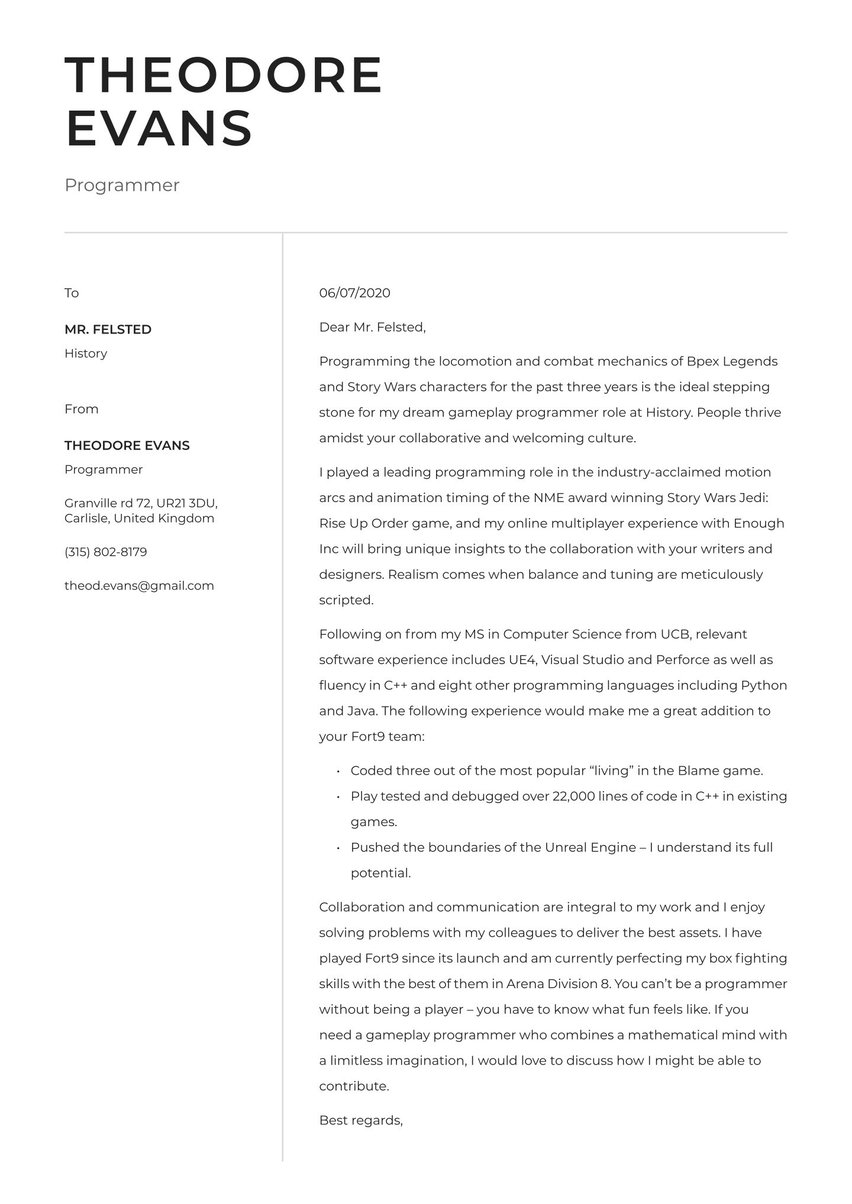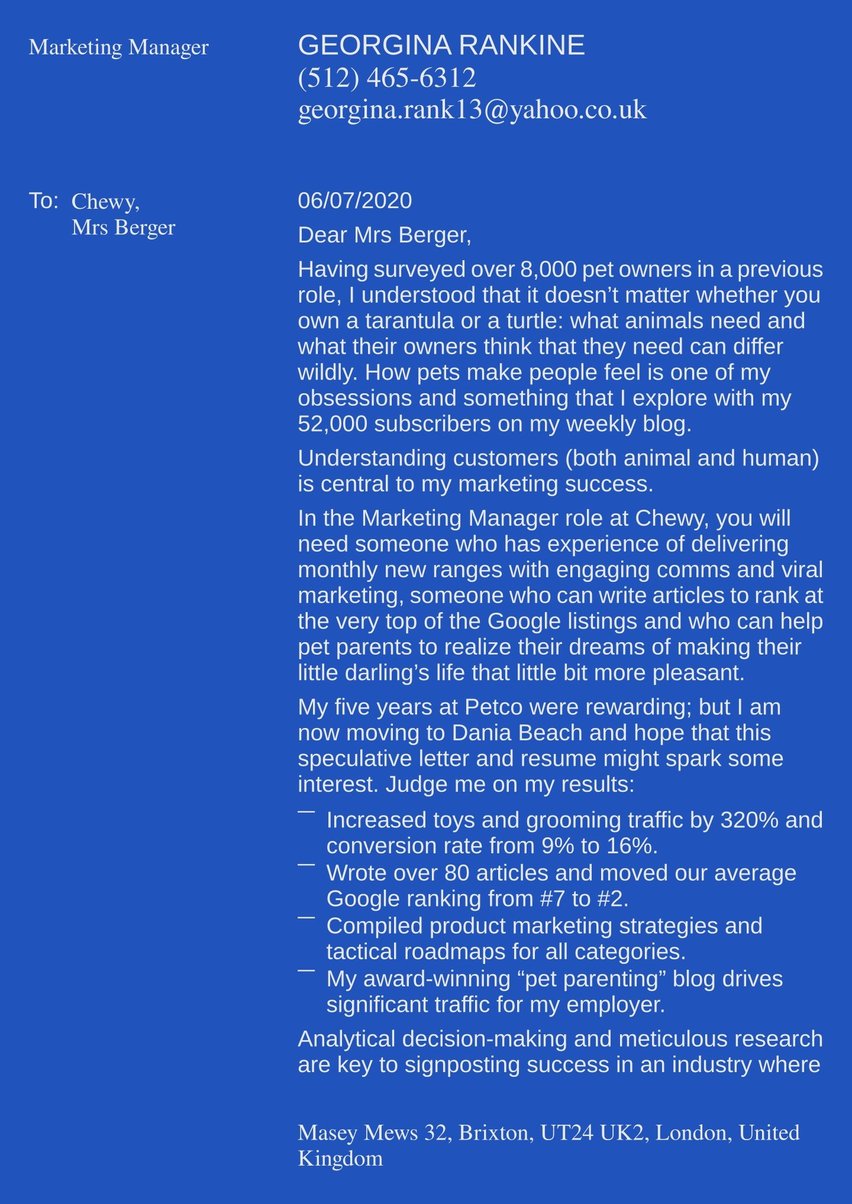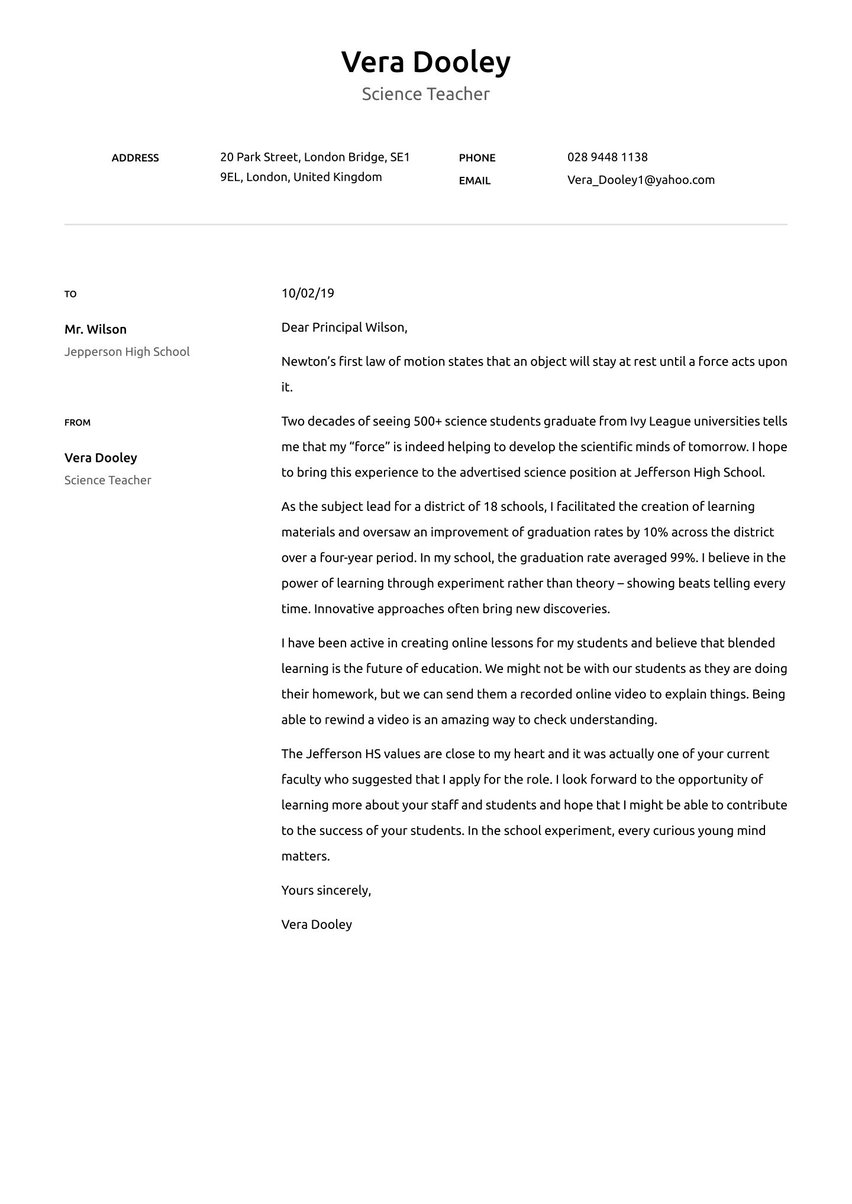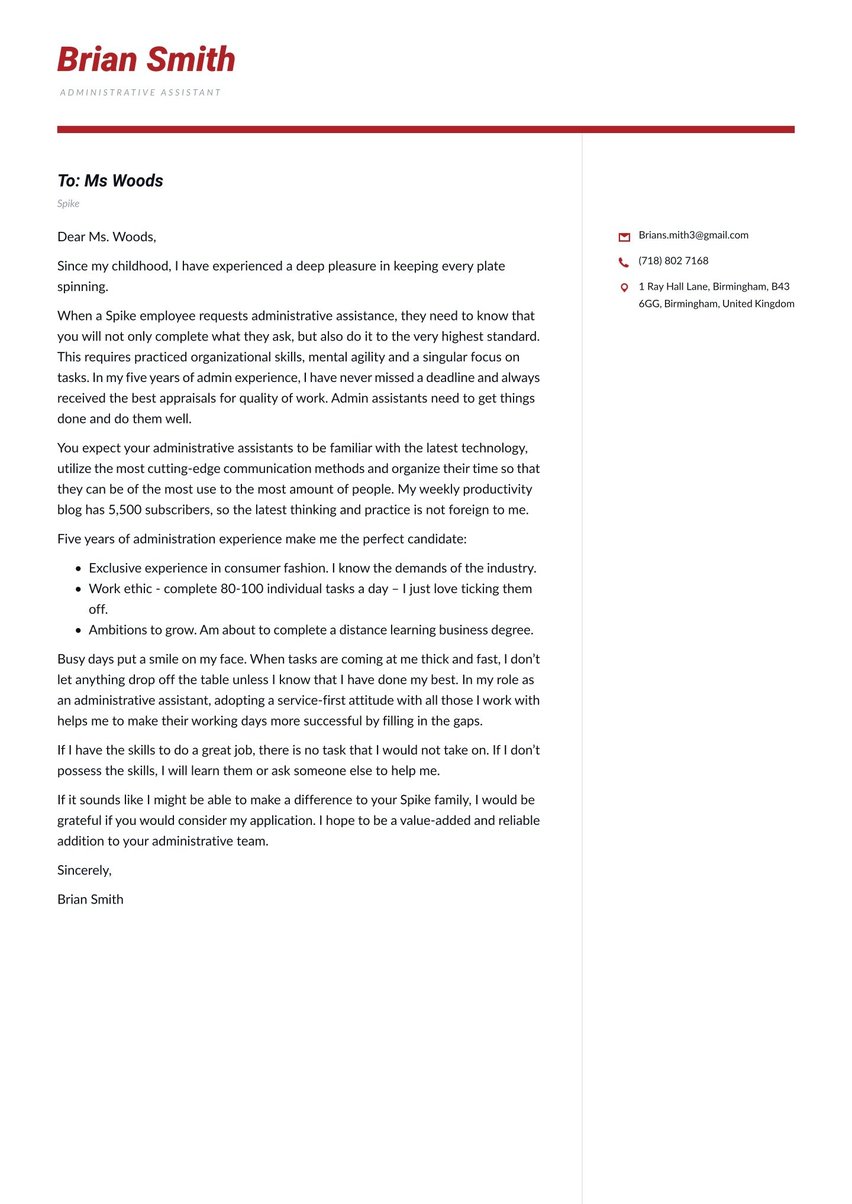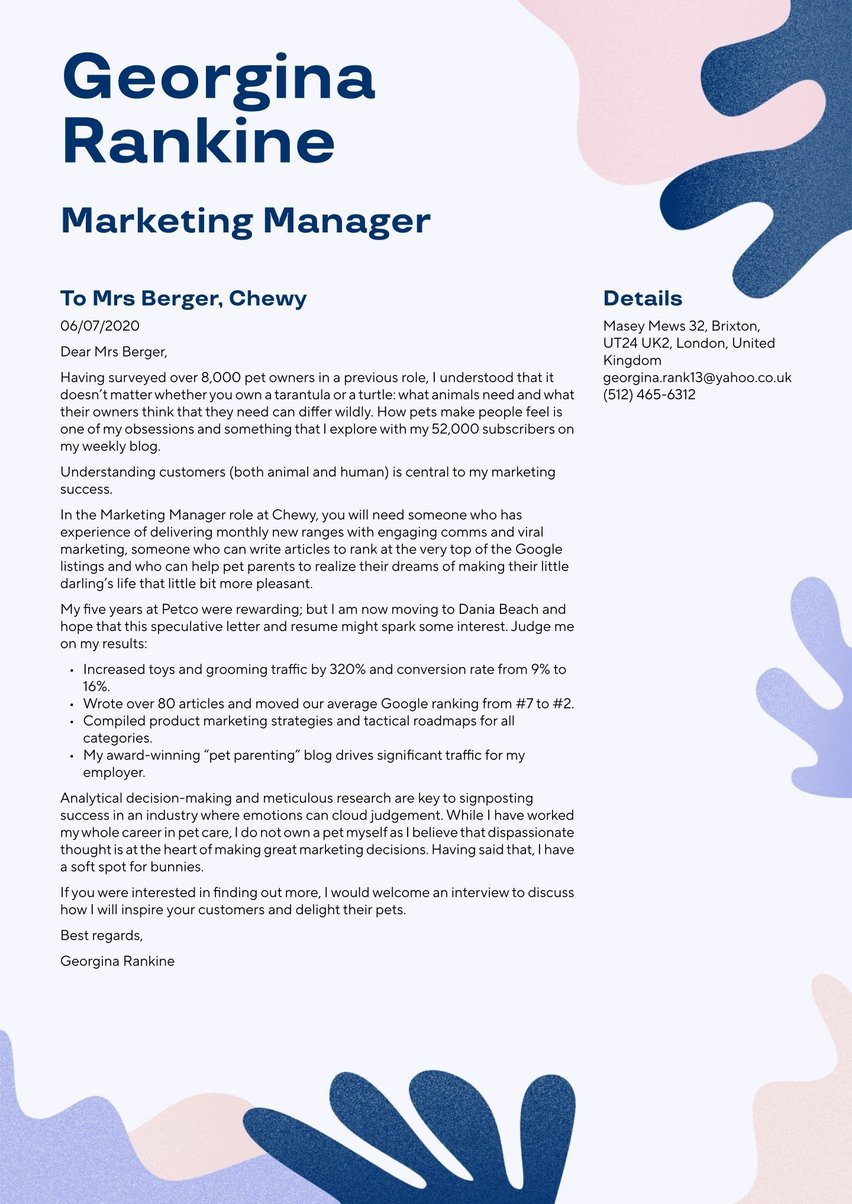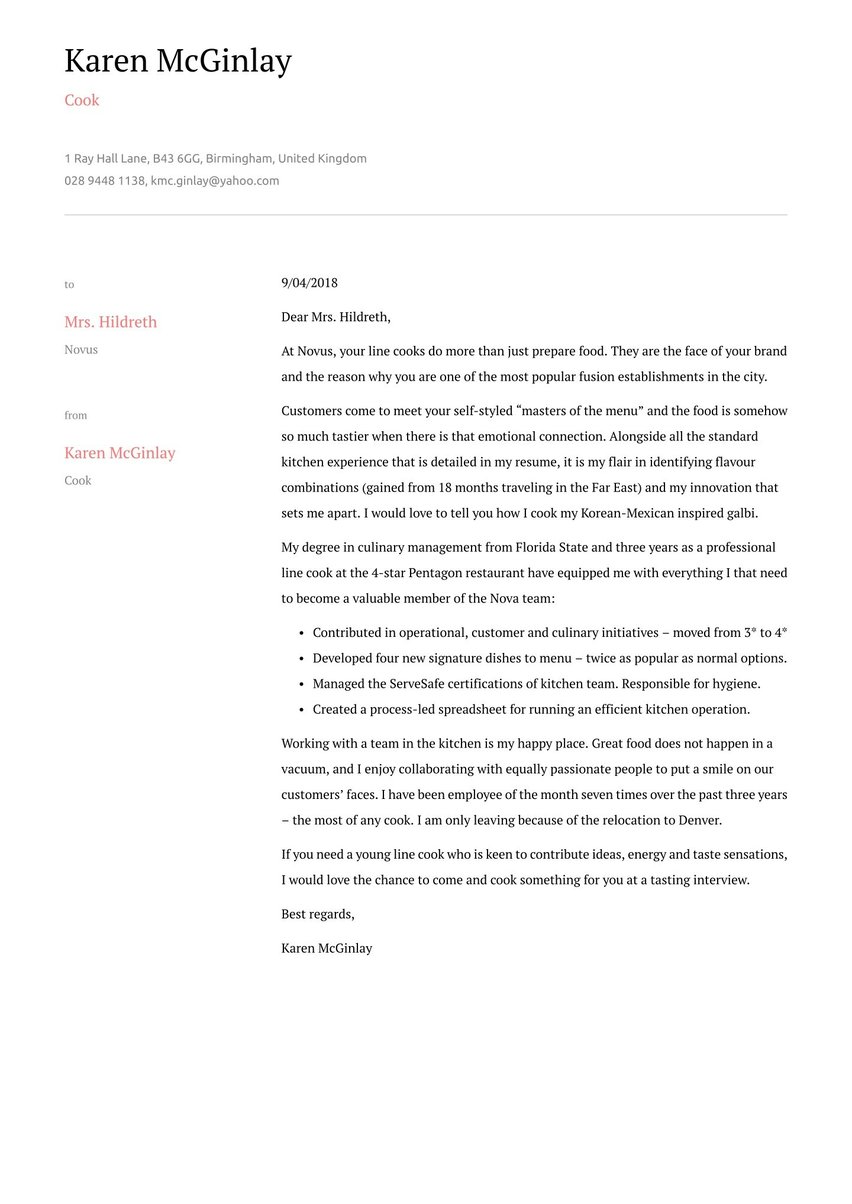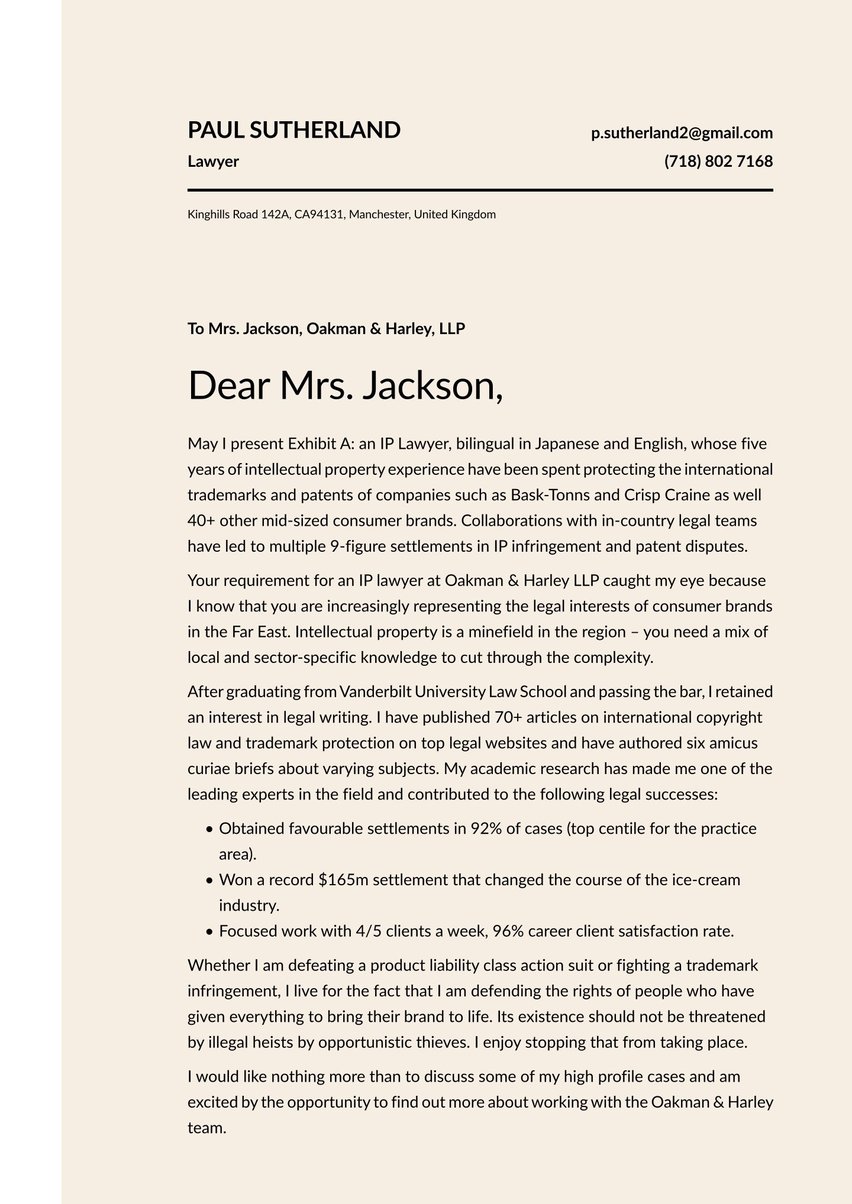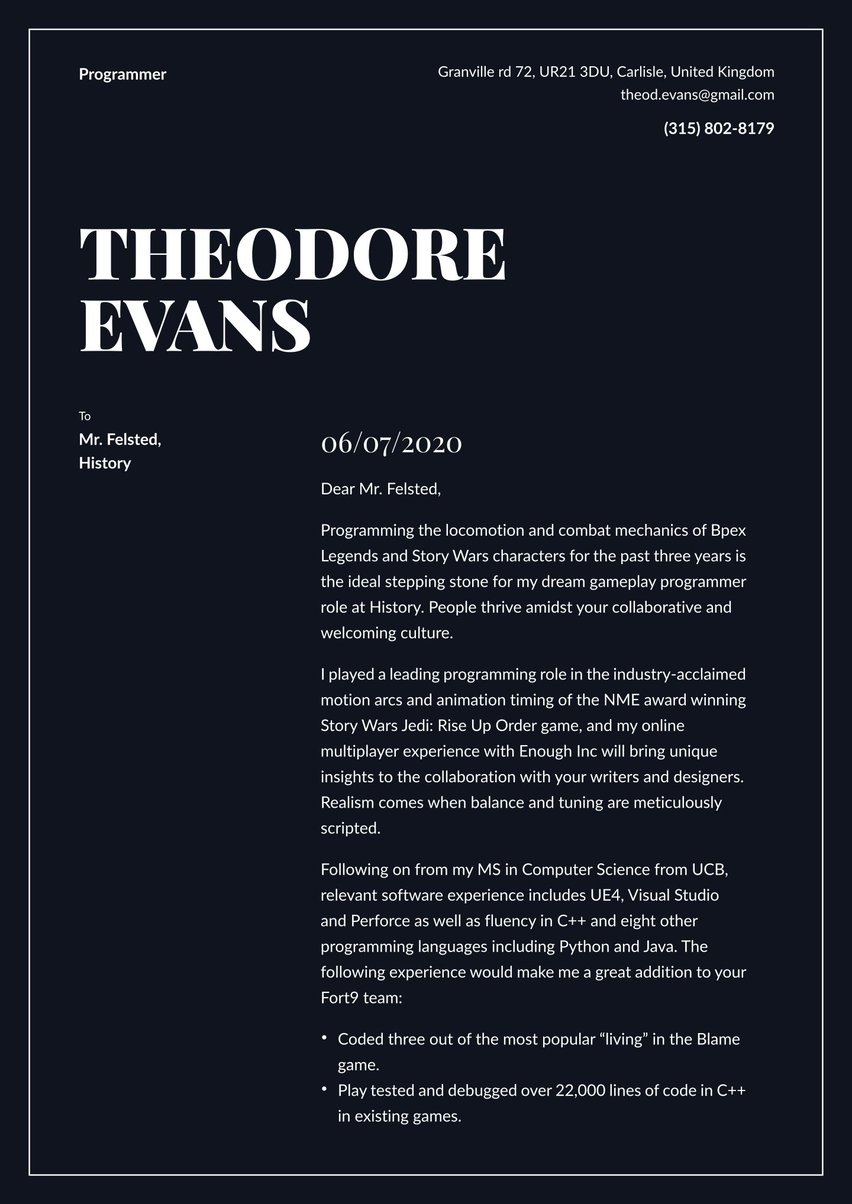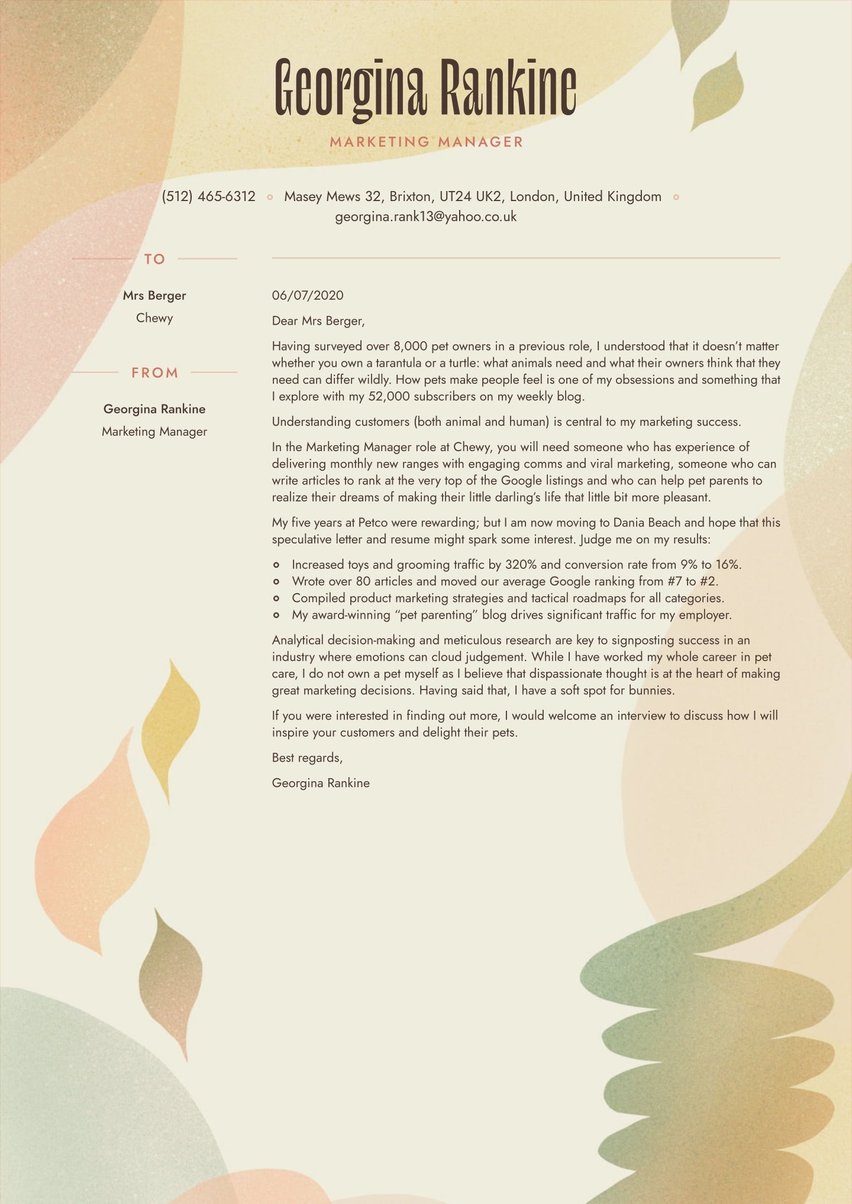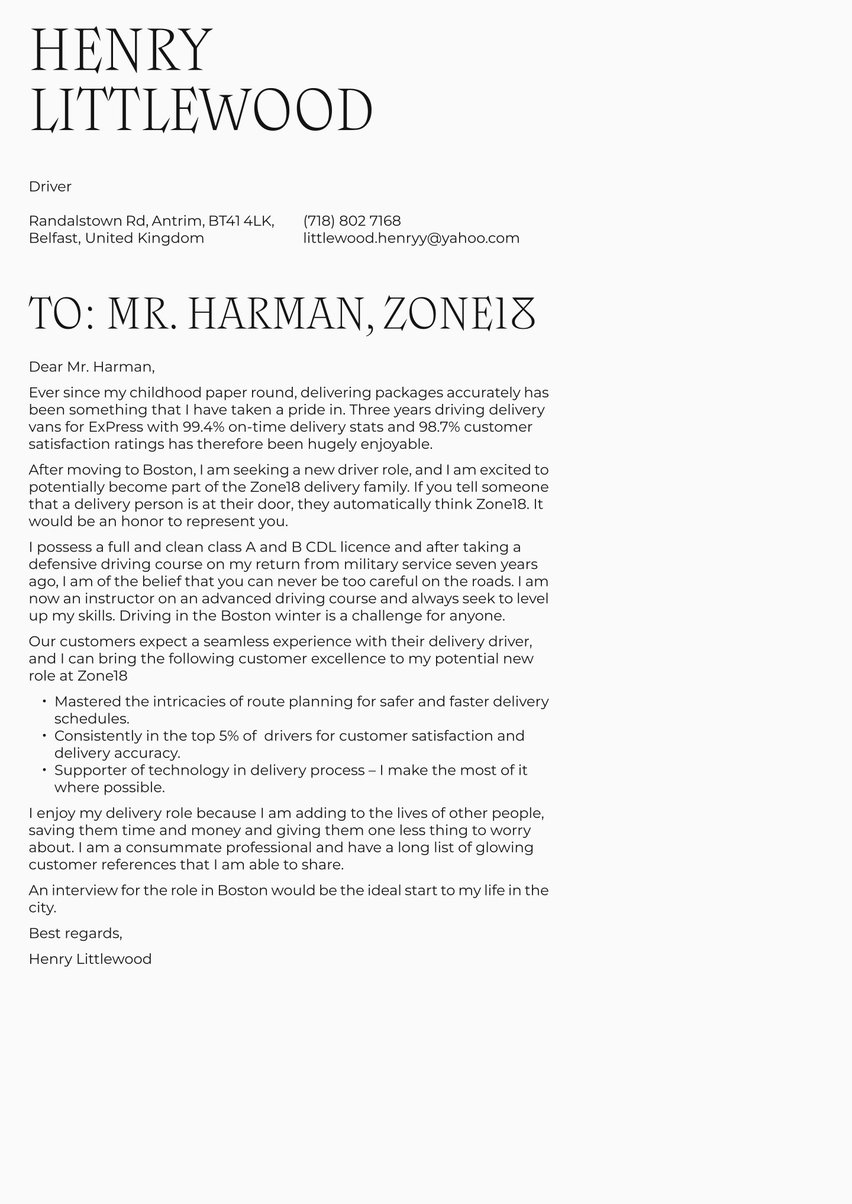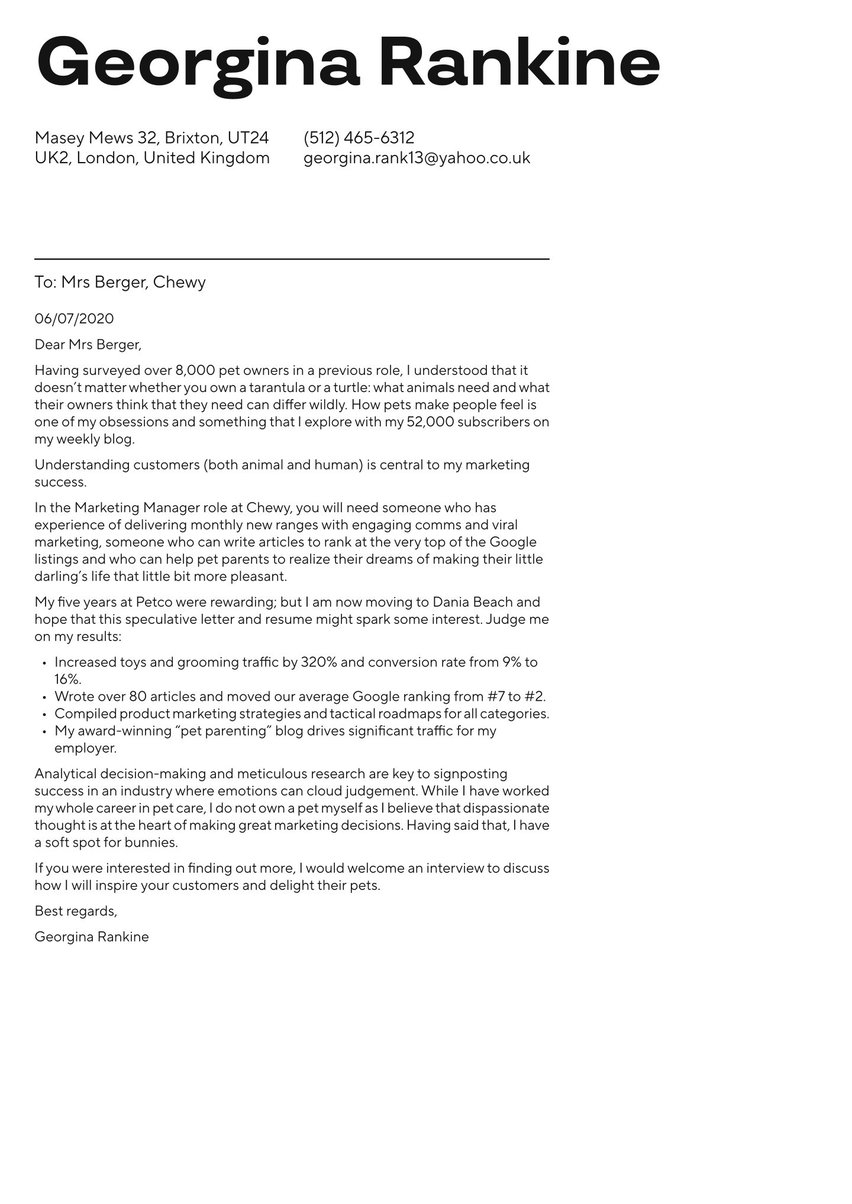You know how to construct buildings that serve their intended purpose while offering a touch of functional style — but what about an architect cover letter that accomplishes the same for your job search?
A well-written cover letter can set you apart from other candidates with similar education or levels of experience. This document also gives you a chance to expand on any qualifications of achievements that aren’t highlighted elsewhere on your application. Architects have to work with plenty of other people in their work, so highlighting some personality in a cover letter will go a long way to outlining what it is like to work with you.
In this cover letter guide, along with the corresponding architect cover letter example, we’ll look at the following topics to help you convey your experience and land the interview:
- How to choose the best cover letter format and what paragraphs the cover letter should include
- How to maximise the effect of each cover letter paragraph (header, greeting, intro, body and conclusion)
- What approach to take when writing your cover letter
- What mistakes to avoid when writing your architect cover letter.
Resume.io is an expert resource for job seekers in all fields and at all experience levels. You can find more inspiration for your application within our ever-expanding collection of cover letter examples and guides.
For more inspiration and cover letter writing advice, check out our related cover letter examples:
Best format for an architect cover letter
This simple cover letter format will allow you to capture all the important elements while still offering the flexibility to make the case for your employment:
- The cover letter header
- The greeting / salutation
- The cover letter intro
- The middle paragraphs (body of the letter)
- The ending paragraph of your cover letter (conclusion and call-to-action)
An effective cover letter should always fit onto one page and ideally contain around 300 words. That means that each sentence should work towards the overall goal of portraying you as the employer’s ideal candidate for the role. Make sure to carefully read the job description before you begin to write. Note down any specific duties, skills, or experiences the employer is looking for. The overlap between the company’s needs and your experience is generally the best material for your cover letter.
Our guide on how to write a cover letter offers a broader look at formatting requirements and general writing advice. You can also use our adaptable architecture cover letter example below to begin constructing your own:
Dear Mrs. Percy,
Working in the architecture team to redesign the foundation’s headquarters would be a perfect opportunity to continue my public sector career. I am an ARB-registered architect with an MA in the Conservation of Historic Buildings.
My post-graduate degree in building conservation saw me assisting on the partial rebuild of the county’s only remaining thatched Tudor cottages. During this project, I collaborated closely with Historic England, so I am aware of how to manage multiple stakeholders when it concerns listed buildings.
After my Master’s, I had the opportunity to broaden my professional scope. During my time at Wiltshire County Council, I was instrumental in several community-based initiatives, focusing on renovations and redevelopments of municipal facilities. I understand that your current project has raised some eyebrows among the local community. My experience has equipped me with the skills to effectively communicate and engage with the public in such matters. I earned praise from residents for my team-oriented and consultative approach.
Finally, my most recent position at Hammond Architects saw me manage a range of projects, with a 360-degree scope. I am no stranger to following a build for many months through to completion and would approach this role with the same attention and enthusiasm.
I’m hope that my qualifications and experience would be a great match for the project. As evidenced by my post-graduate, I have a personal interest in conservation, and I would be enthusiastic to use my skills on this challenging project. I would love to meet to discuss my application further.
Sincerely,
Thomas Smith
Cover letter header
The header of your cover letter serves two essential purposes. The first is to make sure that your document is easily identifiable and that the hiring manager can easily find your contact information in case they want to set up an interview. The second role of the header is to add a touch of attractive formatting and make your application stand out from other candidates. Depending on the type of buildings you design, your header can offer a taste of your personal style. See the header from our adaptable architect cover letter sample for more inspiration.
You do not have to include your full home address in the cover letter header - there may be data protection issues here. Also, the inside address of the employer is somewhat old-fashioned. That space can be used more productively for your career stories.
Cover letter greeting
The greeting of the cover letter is a short but powerful section. This is the place to address the hiring manager, preferably using the correct salutation and last name of the hiring manager who will be reading your cover letter. This detail serves to create a professional and personalised tone for the cover letter. If finding the correct person’s name is not possible, a general greeting using the company name can suffice. Phoning the company to find out the name of the hiring manager can be a great way of asking an extra question or two.
Cover letter introduction
Most hiring managers decide whether or not to keep reading a candidate’s cover letter — or even the rest of the application — after the first few sentences on the page. That means your introduction plays an oversized role in how the employer will perceive you.
Luckily, there are a few good options for your introduction including offering an anecdote that highlights relevant skills, mentioning a connection to the company, or stating your motivations or interests. Below you’ll find the introduction from our cover letter example.
Dear Mrs. Percy,
Working in the architecture team to redesign the foundation’s headquarters would be a perfect opportunity to continue my public sector career. I am an ARB-registered architect with an MA in the Conservation of Historic Buildings.
Cover letter middle part (body)
The middle part of the cover letter, formally known as the body, is where you’ll finally have a chance to expand on all the qualifications and experiences that make you qualified for the role. Still, you’ll need to keep this paragraph or two relatively concise and touch only on the most pertinent aspects of your application.
One way to organise the body section is via the STAR method. First, describe a Situation and the Task required of you. Then offer your Action and the positive Result you achieved.
My post-graduate degree in building conservation saw me assisting on the partial rebuild of the county’s only remaining thatched Tudor cottages. During this project, I collaborated closely with Historic England, so I am aware of how to manage multiple stakeholders when it concerns listed buildings.
After my Master’s, I had the opportunity to broaden my professional scope. During my time at Wiltshire County Council, I was instrumental in several community-based initiatives, focusing on renovations and redevelopments of municipal facilities. I understand that your current project has raised some eyebrows among the local community. My experience has equipped me with the skills to effectively communicate and engage with the public in such matters. I earned praise from residents for my team-oriented and consultative approach.
Finally, my most recent position at Hammond Architects saw me manage a range of projects, with a 360-degree scope. I am no stranger to following a build for many months through to completion and would approach this role with the same attention and enthusiasm.
How to close an architect cover letter (conclusion and sign-off)
With the hard work behind you, it’s time to wrap up your cover letter in a respectful and positive way. One of the most effective conclusions is a call to action.
This sentence expresses enthusiasm for the role and invites the hiring manager to contact you for an interview. Make sure to write with confidence but avoid coming across as pushy or entitled to the job. Then, sign off respectfully using your full name. See our adaptable cover letter sample below.
I’m hope that my qualifications and experience would be a great match for the project. As evidenced by my post-graduate, I have a personal interest in conservation, and I would be enthusiastic to use my skills on this challenging project. I would love to meet to discuss my application further.
Sincerely,
Thomas Smith
Basic mistakes in an architect application letter (and how to avoid them)
Unlike entry-level positions, most architects will have a certain level of experience and education before applying to the role. That means that there will be more scrutiny of your cover letter. Little mistakes can cast a doubt on how well you pay attention to details — an essential quality for a qualified architect. Let’s break down some of the most common mistakes in an architect application letter and how to avoid them.
- Spelling and grammar issues: Little typos and grammar mistakes can add up to an unreadable cover letter, and with all the tools available to solve these problems there are few excuses. Make sure to use spell check, grammar checkers, and even ask a trusted friend to proofread before you submit.
- A generic cover letter: Each cover letter should be tailored to the exact position and employer you are applying to. Just as a building is constructed with its future usage in mind, a cover letter should be geared towards the duties you will be expected to perform in the new role. Make sure to read the job description closely and create a cover letter to fit.
- Poor formatting: Appearances count — in both architecture and job applications — so make sure to spend a few minutes adjusting the layout and design of your cover letter. Choose a format that is equivalent to the amount of creativity you’ll need for the role. A professionally designed cover letter template can help you try out different styles quickly.
Key takeaways
- Architects need precise and well-organised cover letters to stand out in a competitive field.
- Aim to address the hiring manager by name and to create a personalised cover letter whenever possible.
- Use your cover letter to discuss your experiences that most closely match the job description and employer’s needs.
- Don’t overlook the layout and page design — our adaptable architect cover letter sample can help you get started.

